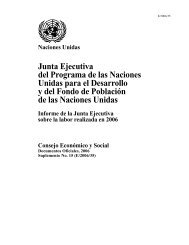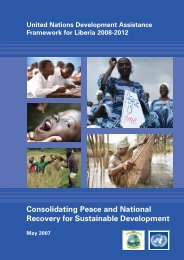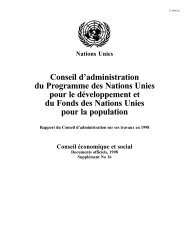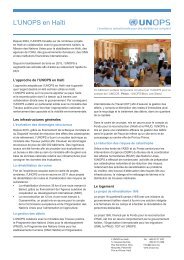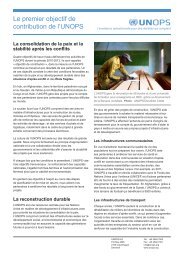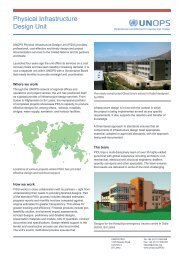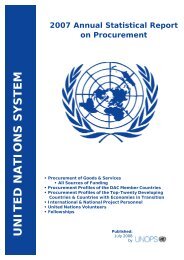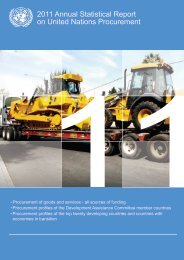India UNDAF 2008-2012 - UNOPS
India UNDAF 2008-2012 - UNOPS
India UNDAF 2008-2012 - UNOPS
Create successful ePaper yourself
Turn your PDF publications into a flip-book with our unique Google optimized e-Paper software.
<strong>India</strong> <strong>UNDAF</strong> <strong>2008</strong>-<strong>2012</strong><br />
Situation Analysis<br />
Over the past several years <strong>India</strong>’s performance on economic indicators has been<br />
impressive with growth rates reaching the 8% target in 2005-2006. The overarching<br />
goal to halve the population below the poverty line will be achieved globally largely<br />
due to the performance of countries like <strong>India</strong>. <strong>India</strong>’s own development goals as articulated<br />
in the Tenth Five Year Plan are even more ambitious than the Millennium<br />
Development Goals on several indicators. However, progress across indicators is uneven.<br />
While the poverty and water goals are on track the main challenges lie in achieving<br />
the hunger and health indicators, in reducing the gender gap in education, and in<br />
providing access to sanitation. 1<br />
The growing economy is also placing increasing demands on natural resources and<br />
energy, with potentially serious consequences for the environment highlighting the<br />
importance of ensuring that policies and programmes address these concerns. Natural<br />
disasters such as the super cyclone in Orissa in 1999, the earthquake in Gujarat in<br />
January 2001 and the Tsunami in December 2004 have repeatedly taken their toll in<br />
terms of human and economic costs. These demonstrate the vulnerability of affected<br />
populations. In order to protect development gains and safeguard on-going efforts<br />
there is need to strengthen emergency preparedness, both at the broader systemic<br />
and policy levels and also to promote community level preparedness.<br />
There have been encouraging developments and positive trends in a number of sectors<br />
but effective implementation of programmes remains the main challenge. Allocation<br />
of resources for the development sector has increased significantly, particularly<br />
in the past two years. The coalition Government’s National Common Minimum Programme<br />
outlines a commitment to increasing health expenditure from 0.9% to 2-3% of<br />
GDP 2 , and increasing education expenditure from 3% to 6% of GDP 3 .<br />
1<br />
MDG Matrix: Mid-term Review of Tenth Five Year Plan<br />
2<br />
The National Common Minimum Programme of the Government of <strong>India</strong>. May 2004.<br />
3<br />
The National Common Minimum Programme of the Government of <strong>India</strong>. May 2004.<br />
3




